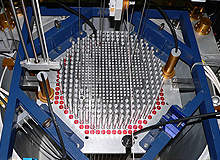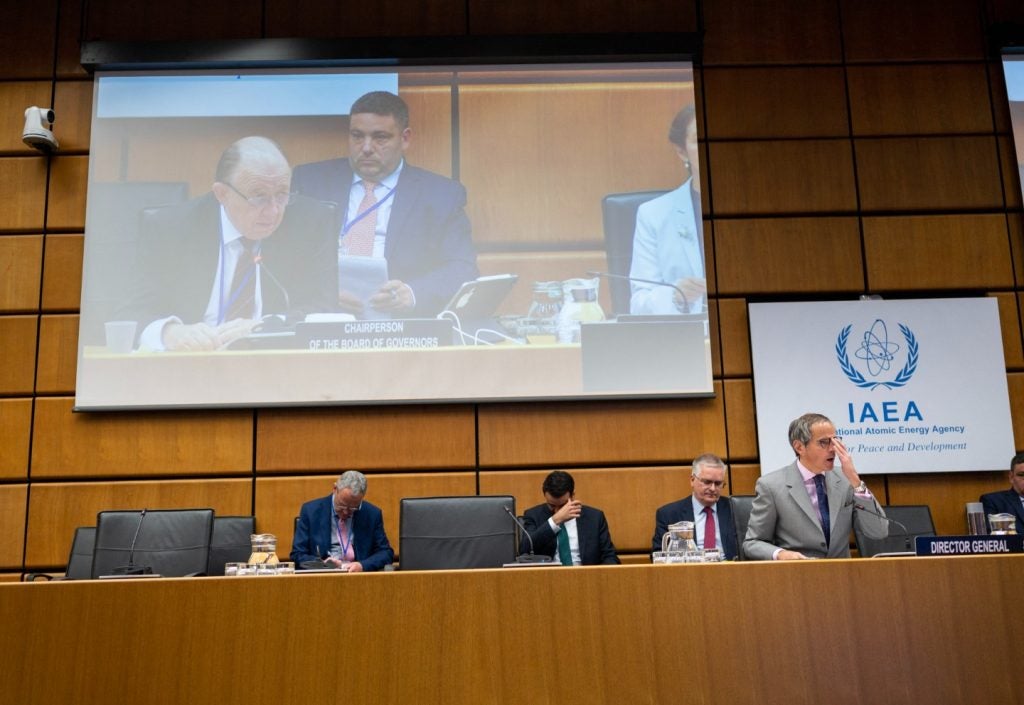
Since 2001, the uranium industry has been enjoying some of the success gold and iron have had for hundreds of years, thanks to a growth in demand for nuclear energy.
The so-called nuclear renaissance, however, has barely even begun and already concerns are being raised over the availability of uranium, with some experts saying resources will be exhausted by as early as 2070.
However, the increasing number of new discoveries and actions being taken to preserve and recycle uranium resources suggests that the argument that reserves are dwindling isn’t so clear-cut.
Nuclear beginnings
The development of nuclear reactors has been put on hold for a number of decades because of their alleged lack of provision for long-lived wastes and the risk of radioactive fission products. Operating nuclear reactors contain large amounts of radioactive fission products which, if dispersed, can pose a direct radiation hazard.
However, concerns over climate change and dependence on overseas fossil fuels have led to a greater acceptance of the energy resource. And, if ever we needed an alternative to fossil fuel and a reliable source of electricity, uranium certainly fits the bill. Indeed, 1kg of the isotope uranium-235 has the potential to produce about 80 terajoules of energy; as much energy as 3,000t of coal.
Due to this renewed acceptance, the world is embarking upon a huge increase in nuclear capacity. The latest statistics from the World Nuclear Association show that China hopes to raise capacity to 70GW-80GW by 2020. Some 30 reactors are under construction in the country and another 51 units are planned to break ground in the next three years.
How well do you really know your competitors?
Access the most comprehensive Company Profiles on the market, powered by GlobalData. Save hours of research. Gain competitive edge.

Thank you!
Your download email will arrive shortly
Not ready to buy yet? Download a free sample
We are confident about the unique quality of our Company Profiles. However, we want you to make the most beneficial decision for your business, so we offer a free sample that you can download by submitting the below form
By GlobalDataIn Europe, Finland and Sweden are constructing permanent disposal sites for nuclear waste and are developing new power plants.
The UK plans include replacing the country’s ageing fleet of nuclear reactors with new nuclear build, as a spokesman for the Department of Energy and Climate Change explains, “To date, three energy consortia have announced plans to build up to 16GW of new nuclear in the UK. EDF has publicly made clear its intention to build four new EPR reactors amounting to 6.4GW at Hinkley Point and Sizewell. Horizon Nuclear Power – a joint venture between RWE and E.ON – also intends to build at least 6GW of new nuclear capacity in the UK at Wylfa and Oldbury.”
Plans for construction have sparked a growth in uranium usage. But, the limit to such growth is debatable.
Dwindling supplies
At the Westminster Energy and Transport Forum held in London, UK in October last year, Professor Colin Boxall from the Lancaster University’s Engineering Department presented his preliminary findings with regards to the sustainability of the uranium supply.
He explained that the 370GW electric capacity across the world requires about 66,000t of natural uranium per annum. “We have got about 4.5m tons of uranium remaining which equates to a 69 year lifetime for the uranium supply at current rates of consumption and burn up. Speculative resources – that’s the extra 10m tons that are undiscovered – will be exhausted by 2122.”
Boxall’s argument supports the “limits to growth” theory popularised in the Club of Rome writings in 1972, which states that resources of the earth are limited and we must therefore plan for negative growth.
So, if these predictions are correct, what is the uranium mining industry doing to prolong its future?
Sustainability
As the history of coal mining has proved, the question may not be whether there is sufficient mineral resources available, but whether nuclear energy companies can buy these resources at the right price.
For example, there are about 3.3mg of uranium per cubic metre of seawater, meaning concentration is low but quantities are high. However, at ten times the current price, it is not financially viable to purchase these reserves.
In the mean time, one way that the element can be reserved is by exploring the use of fast breeders, a fast neutron reactor designed to breed fuel by producing more fissile material than it consumes, as Boxall explains, “Fast breeders allow for the recycling of the plutonium from those thermal reactors as well as the breeding of fissile pollute from fertile U. This is about 40 times as efficient as existing technology and extends the supply lifetime up to about 3,200 years.”
Another way of generating electricity through nuclear reactors could be to invest in thorium, an element that is three times more abundant and therefore cheaper and more sustainable than uranium.
Alessandro Clerici , A Member of the Nuclear Power Europe Advisory Board and Senior Advisor for ABB Italy says that, theoretically, this is possible, “Countries with large Thorium reserves such as India are working hard on making this a reality. Considering times for implementing/certifying fuel and taking into account existing resources and typology of reactors in operation, I believe thorium will be the second choice worldwide.”
A study in the UK, however, proved that investing in thorium would be unrealistic, at least during the current economic times, as the Department of Energy spokesman says, “The Government’s Chief Scientific Adviser, Sir John Beddington, recently coordinated an assessment of the prospects for research into advanced thorium reactors, with input from a number of sources. One conclusion was that, whilst the science is reasonably sound, the thorium fuel cycle would carry major technology and commercial risks.”
“The assessment further concluded that, for the UK, a watching brief on thorium technologies would be appropriate, but that it should not be a priority area for research, in the context of constrained budgets,” the source adds.
Positive prospects
Despite findings that uranium reserves are dwindling, there are many arguments to suggest that the “limits to growth” theory is out-dated.
Clerici explains, “Uranium costs are a small percentage of nuclear kWh costs and we have enough resources to last 100 years. With commercial operation of Generation IV reactors around 30 years away, the reserves will last for more than 1,000 years.”
Generation IV reactors are now being researched, ready for development in around 2030. The primary goals for these reactors are to improve nuclear safety, improve proliferation resistance, minimise waste and natural resource use, and to decrease the cost of building and running such plants.
The question is, how important is nuclear power and will the lights go out without it? E3G Founding Director Tom Burke thinks not, “There never was any prospect other than in the headlines of the lights going out, and there are much better ways to get our emissions down.
“We have got the renewables. I think they provide us with a pretty secure basis for going very much into the long and the distant future, with a perfectly sensible, actually much better balanced electricity generation system,” Burke adds.
Canada’s E-for-Energy Management Consultant and member of the Nuclear Power Europe Advisory Board Ulla Pettersson, on the other hand, says that nuclear power is essential to our future, “Very few hydro power plants have enough water flow to be able to provide a stable and reliable base load whilst other renewables such as wind and solar are very intermittent requiring fossil sources of power generation when the wind isn’t blowing, when the water isn’t running or when the sun isn’t shining.”
“Other sources suitable for base load generation are fossil fuels, coal, gas, oil etc, but these emit green house gases and until carbon capture and storage is implemented along with biomass it remains unsustainable,” Pettersson argues.
The outlooks for the uranium, and therefore the nuclear power industry, are conflicting. What is clear, however, is that we have enough reserves to last us a lifetime, what is uncertain is whether we will develop sustainable technologies to make nuclear development and extraction possible for future generations.






